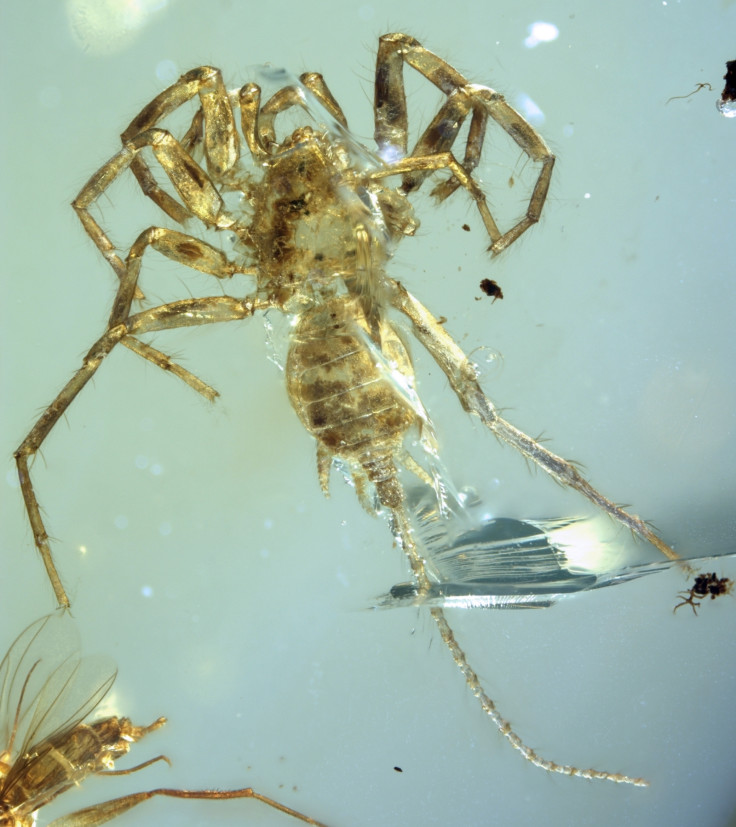Extraordinary ancient 'spider with a tail' discovered in 100-million-year-old amber
Four tiny specimens of the new species have been found, measuring around 2.5 millimetres in body length.

Researchers have discovered a remarkable ancient arachnid species, resembling a spider with a tail, preserved in a 100-million-year-old amber found in Myanmar.
The strange creature shares certain characteristics with modern spiders - including fangs, four walking legs and silk-producing organs at its rear – however, it also has a long tail , or flagellum - a feature that living spiders lack.
Four tiny specimens have been found, measuring around 2.5 millimetres in body length plus a 3-millimetre-long tail - which is used for sensing the environment. The new species is described in a paper published in the journal Nature Ecology & Evolution, authored by Paul Selden from the University of Kansas and colleagues from China, Germany and the UK.
The new study confirms a prediction the researchers made a few years ago when they described a similar arachnid that also resembles a spider with a tail, but does not have silk-producing organs - known as spinnerets. These animals - which were much older, dating to between 380 and 290 million years ago – formed the basis for new order of arachnids known as Uraraneida - an evolutionary ancestor to modern spiders.
"The ones we recognised previously were different in that they had a tail but don't have the spinnerets," Selden said. "That's why the new one is really interesting, apart from the fact that it's much younger - it seems to be an intermediate form. In our analysis, it comes out sort of in between the older one that hadn't developed the spinneret and modern spider that has lost the tail."
As a result, the species has been named Chimerarachne in reference to the Chimera – a monstrous fire-breathing creature from Greek mythology which was composed of limbs from various animals.
Little is currently known about the Chimerarachne's behaviour, although it likely ate insects, according to the researchers. Despite the fact it could produce silk, it is not certain whether the animal constructed webs to trap food.
"We don't know if it wove webs," Selden said. "Spinnerets are used to produce silk for a whole host of reasons - to wrap eggs, to make burrows, to make sleeping hammocks or just to leave behind trails. If they live in burrows and leave, they leave a trail so they can find their way back. These all evolved before spiders made it up into the air and made insect traps."
Because the animal was found in a very remote region of Myanmar, the team speculate that its descendants may still be alive today, waiting to be discovered.
"It makes us wonder if these may still be alive today," Selden said. "We haven't found them, but some of these forests aren't that well-studied, and it's only a tiny creature."





















